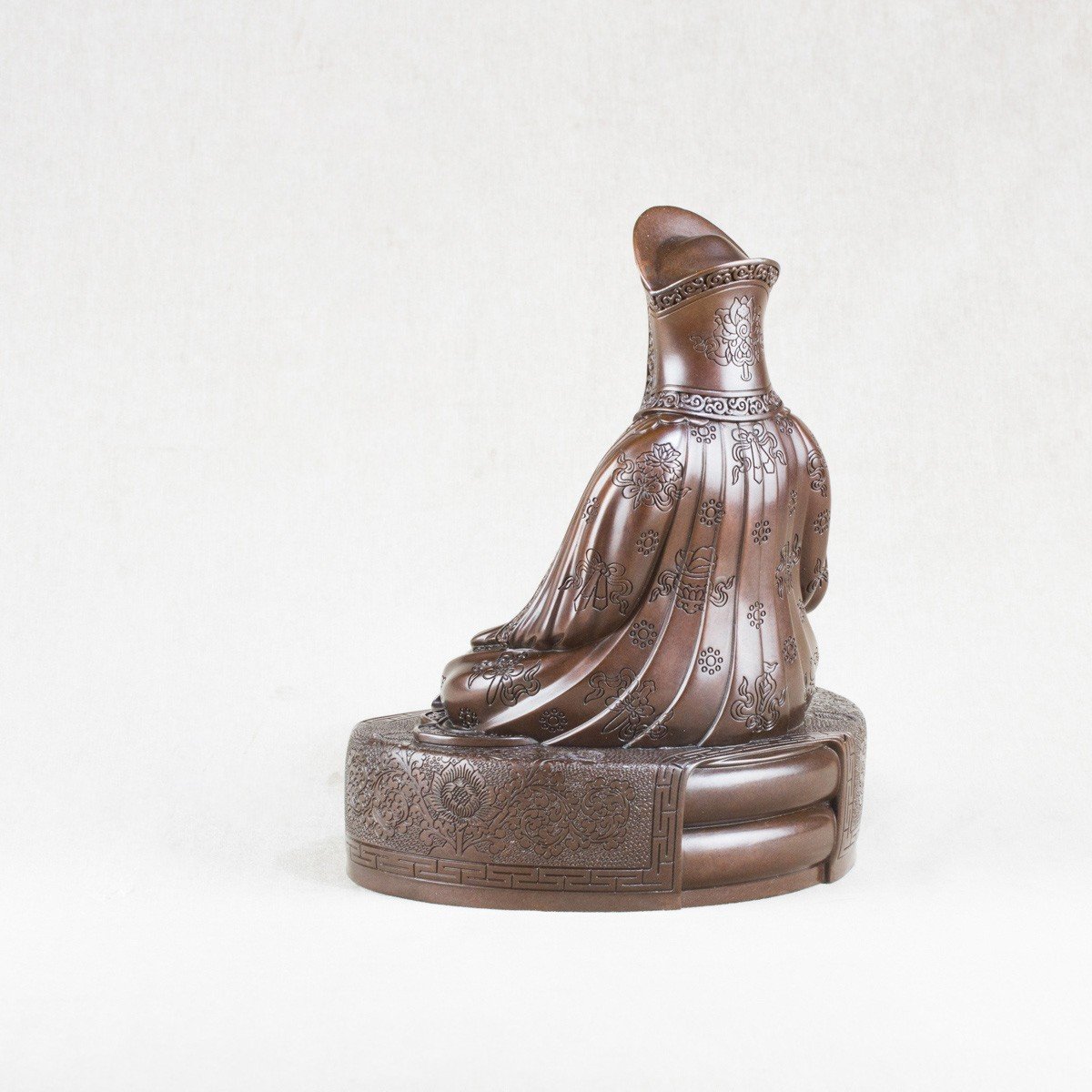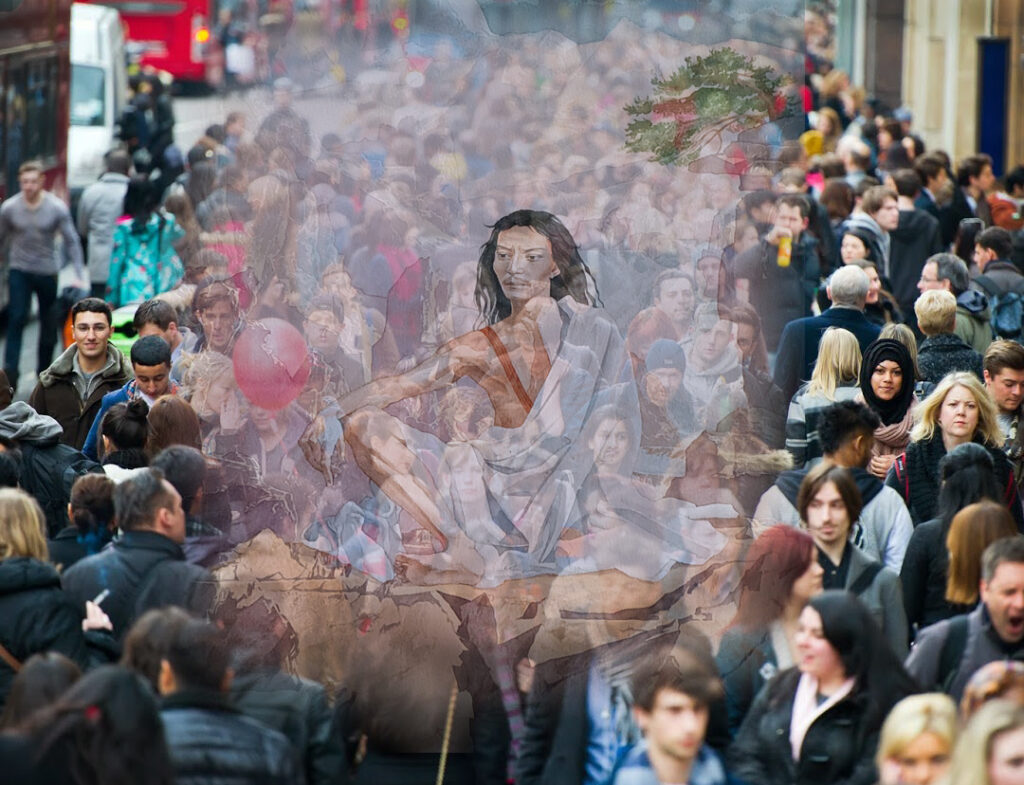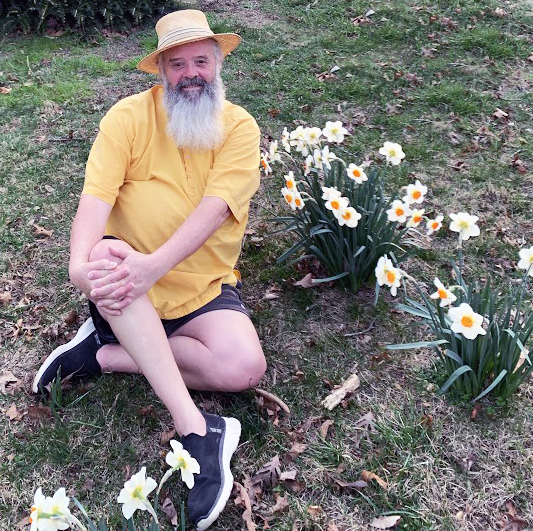
- This event has passed.
The Instruction of Gampopa: A Precious Garland of the Supreme Path. Part Two
October 13, 2019 @ 9:30 am - 2:00 pm

In the words of Gampopa: “To all future individuals devoted to me who think they cannot meet me: Please read the treatises composed by me, such as Precious Garland and The Ornament of Precious Liberation. It will be no different from meeting me personally.” Since he has said this, you fortunate ones devoted to Lord Gampopa, please be diligent in the propagation of these texts.
In the Precious Garland, Gampopa outlines in twenty-eight categories what practitioners of varying levels need to know in order to perfect their spiritual practice. He gives precise instructions on the correct view, meditation and conduct, and offers frank answers to common questions concerning obstacles to Dharma practice.
Here is an excerpt from the teachings.
Next are the ten things not to be abandoned. To begin with, compassion should not be abandoned because it is the very root of any benefit we are able to give to others.
The second thing not to be abandoned is appearances. Since appearances are the natural display of the mind, it is unnecessary to abandon them. Tilopa indicated this when he said, It is not by appearances that you are fettered, but by fixation on them. So abandon that fixation. It is not what you experience that causes confusion, it is your fixation on the experience as being inherently what it appears to be. Therefore only this fixation need be relinquished, not experience itself.
The third thing is that thought is not to be abandoned, because it is the play of the ultimate nature or dharmata. As is said in the Kagyu lineage prayer, The nature of thought is the dharmakaya. If we are capable of looking directly at the essence of thought, then whatever thought arises is self-liberated. If we can put this into practice, there is no need to try and remove thoughts or abandon them in any way.
The fourth thing not to be abandoned applies primarily to those with realization. Mental afflictions are the indication of wisdom and therefore need not be abandoned. The presence in our experience of stupidity, aversion, pride, desire, and jealousy indicates the presence in our continuum of the wisdom of the dharmadhatu, the mirror-like wisdom, the wisdom of equanimity, the discriminating wisdom, and the wisdom of activity. Since the mental afflictions are merely the display of the wisdoms that are their essence, someone who has the realization to experience this directly need not abandon them.
It is important to analyze this statement because it might seem very strange on the face of it. Just a few minutes ago you were told that you must definitely abandon mental afflictions, and now you are being told you do not have to abandon them. This is not a contradiction, but a demonstration of the difference in the maturity of practitioners at various levels of the teachings. The approach for beginners, in which it is necessary to abandon mental afflictions, is like the need for stairs. Someone who does not have wings and who wishes to get to the second story must walk up a set of stairs. The process of walking up stairs is like the process of subduing the mental afflictions. Someone who has wings like a bird does not need to use stairs but can fly directly up to the second story. Having wings corresponds to having the realization to be able to implement the profound wisdom of secret mantra. Thus, these two pieces of advice are not contradictoiy but are directed toward individuals at different levels of practice.
The fifth point in this section is in the same category as the fourth. The desirable objects that appear to the five senses are not to be abandoned because they are the water and manure of experience and realization. For a practitioner with some realization and some strong experience, there is no coarse fixation on his or her imputed inherent existence. There is no coarse ego-clinging, and in the absence of that, there is no feeling or inherent concept of ownership. For such yogis and yoginis, no matter how many things surround them, no matter how much wealth or prosperity they experience, they do not have a feeling of identification with or ownership of these things. It is just as though there were beautiful wild animals wandering around them. If we see wild animals, we do not feel, That’s my tiger, or, That’s my deer. We can appreciate them, but there is no fixation on them.
For example, when Jetsun Milarepa was offered some very hearty nutritious food, it was of great benefit and enhanced his realization tremendously, but he did not develop any attachment to the taste of it. It was not a question of indulging his desire, it was a question of strengthening his body. In the same way, advanced practitioners can use food and drink as feast substances. There are, as well, practices in which the clothing they wear is consecrated as the armor of mantra. These are practices that are suitable for advanced practitioners with some direct experience. It is important to understand that different pieces of advice in this text are offered to practitioners at different levels.
The sixth thing that is not to be abandoned is sickness, suffering, and pain, because they are excellent teachers. When we become distracted and engage in wrongdoing, or when we are simply not mindful, or not experiencing stable renunciation, sometimes a little bit of suffering can remind us very directly and effectively of what is to be avoided, what is to be renounced, and what suffering really is. For example, if we experience a certain amount of physical difficulty as a human being, then we might consider how much more unpleasant it would be to be reborn in the lower realms, where the sufferings are much worse. That might inspire us to try to avoid rebirth in the lower realms. Therefore, such difficult situations need not be avoided, because at times they can be very helpful.
According to Shantideva, our experiences of suffering can be of benefit because they sadden us, and the sadness brings us back in on ourselves and cuts through our pride. Through the loss of our coarse arrogance we are able to experience genuine compassion for others. We think, If I am suffering this much, if it’s this unpleasant, how must it be for others? and we come to appreciate the suffering of others. This leads us to avoid wrongdoing and that which is harmful to ourselves and to others, and leads to a natural delight in that which is virtuous. Tiius there is some benefit to such experiences.
The seventh thing that is not to be abandoned is enemies and obstructers, because they naturally exhort us to practice. From the mahayana point of view, the basis of our attainment of buddhahood, our realization of the ultimate nature, is the cultivation of such qualities as patience. The only possible way we can cultivate the virtue of patience is through situations in which we are dealing with some misfortune or actual aggression. For that reason, people who are aggressive to us are our assistants in practice, and since they arise naturally they are said to be the natural exhortation to practice. They are also the exhortation that leads us to the realization of the true nature of all things, which is buddhahood.
However, if enemies and obstructers disappear spontaneously, it is a sign of attainment (siddhi) and you do not have to reject that result. If unpleasant situations disappear even though you make no special effort to remove them, you do not have to try to get them back again. If you have merit and attainment, in many instances this will cause situations in which others are aggressive to you to be pacified naturally. When that happens, you do not have to think something has gone wrong. For example, when the king attempted to kill Acharya Nagarjuna with a variety of swords by hacking away at his neck, the king was not able to hurt Nagarjuna because Nagarjuna did not have the karma to be hurt. In the same way, someone with realization will not naturally find many enemies and obstructions, and that is a sign of siddhi; it is a sign of attainment. Just because the presence of enemies may not always be bad, this does not mean that the lack of enemies is necessarily bad.
The eighth thing not to be abandoned is methodical, step-by-step progress in our study and practice, because this is what raises us to the height of definitive understanding. We should not think that a gradual progress through the various stages or vehicles of practice is to be abandoned because it may not seem to be the final meaning of the Buddha’s teachings. Such thinking is incorrect. All of the great scholars and siddhas of the past became learned in all of the various stages and vehicles of the Buddha’s teachings, and on the basis of that, finally arrived at the definitive understanding associated with the vajrayana. For our own development we must practice in a way that will gradually ripen or mature our insight into the meaning of Dharma There are many stages to this and they should all be cultivated. As well, we should not abandon or revile the various presentations of Dharma that are made in different styles or at different levels, because these are all appropriate for the needs and dispositions of different beings.
The ninth thing not to be abandoned is the various Dharma practices involving physical activity, because these are genuine practices that mature the mind and are beneficial. This means not to abandon prostrations, circumambulation, and other external practices of Dharma because these actually do benefit us; they actually do bring results.
The tenth thing not to be abandoned is the intention to benefit others, even when you do not have much ability to benefit them directly right now. Often, when people begin to practice they think, What is the benefit of saying, I am doing this practice in order to benefit others. I will benefit others in the future in such and such ways?’ Since I am not actually doing anything that benefits others right now, what meaning is there? I cannot do anything that will help anyone. In fact, there is the same potential for this altruistic attitude to produce the actual results as there is for a seed to produce a flower. If you say there is no benefit in altruism, then it is like saying a seed will not produce a flower. Just as altruism in itself is not a benefit to others, a seed is not a flower. A seed is not even a sprout. Nevertheless, without a seed there is no possibility of having the sprout and leaves and flower, so it is important to begin with the attitude and intention that you will be of great, vast benefit to others.
At the beginning of the path no one can perform the vast acts of a bodhisattva. When the Buddha first generated the intention to attain supreme enlightenment he was unable to do much to help others. As time went on, though, he became extraordinarily capable of helping others. Nowadays, people have a great deal of doubt about this. When instruction is given in such matters as bodhicitta, people commonly say, What possible use is this? I can’t do anything. It is important not to abandon altruism merely because you do not seem to be able to do so much now.
These are the ten things not to be abandoned.
Gampopa lived from 1070 to 1153. was born in Central Tibet and trained as a doctor. At age 26, when his family succumbed to an epidemic, he promised his wife on her deathbed that he would become a monk and devote his life to Buddhism. He eventually met the great yogi Milarepa and became his foremost student. He founded the system of Mahamudra which combines the tantric teachings of the great siddhas of India with the graduated path teachings of Atisha. Among his many writings the two most influential are The Jewel Ornament of Liberation and A Precious Garland of the Supreme Path. For those with faith in Gampopa, studying his text can be “exactly the same as receiving teachings directly from him.”



